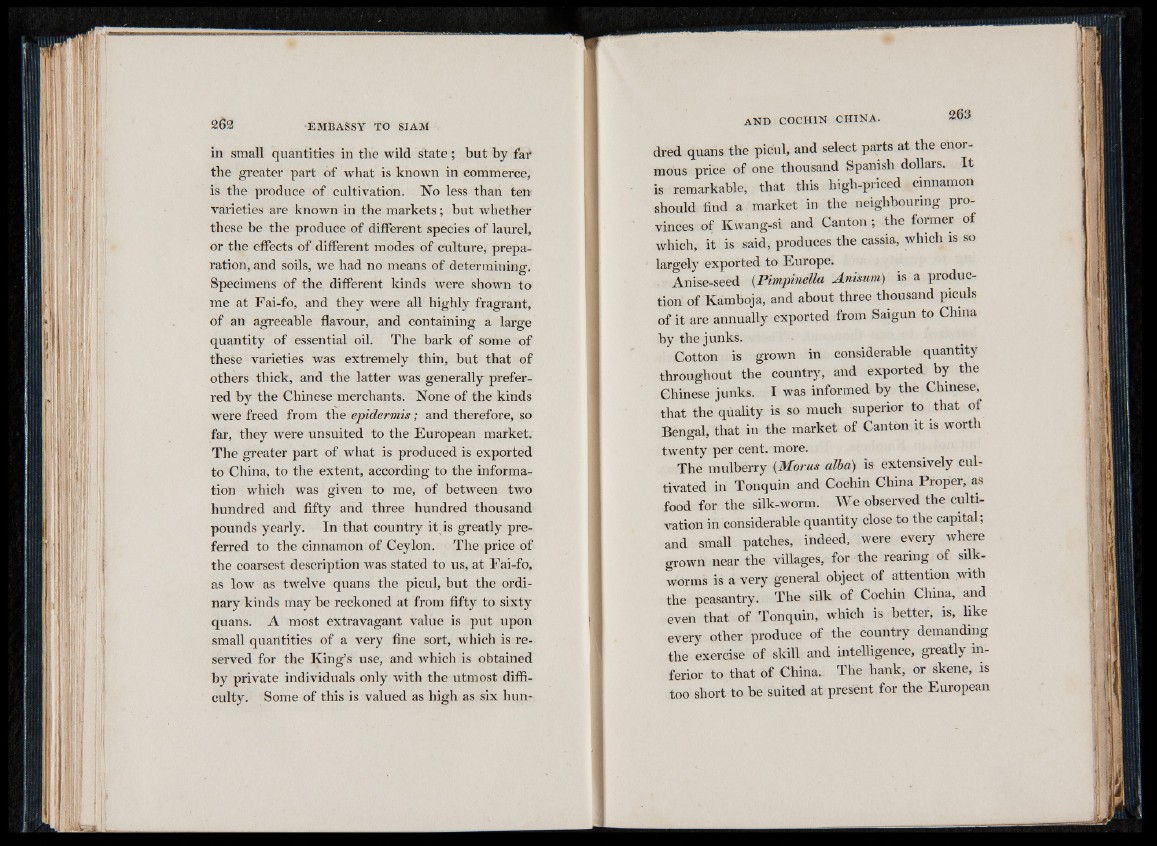
in small quantities in the wild state ; but by far
the greater part of what is known in commerce,
is the produce of cultivation. No less than ten
varieties are known in the markets; but whether
these be the produce of different species of laurel,
or the effects of different modes of culture, preparation,
and soils, we had no means of determining.
Specimens of the different kinds were shown to
me at Fai-fo, and they were all highly fragrant,
of an agreeable flavour, and containing a large
quantity of essential oil. The bark of some of
these varieties was extremely thin, but that of
others thick, and the latter was generally preferred
by the Chinese merchants. None of the kinds
were freed from the epidermis; and therefore, so
far, they were unsuited to the European market.
The greater part of what is produced is exported
to China, to the extent, according to the information
which was given to me, of between two
hundred and fifty and three hundred thousand
pounds yearly. In that country it is greatly preferred
to the cinnamon of Ceylon. The price of
the coarsest description was stated to us, at Fai-fo,
as low as twelve quans the picul, but the ordinary
kinds may be reckoned at from fifty to sixty
quans. A most extravagant value is put upon
small quantities of a very fine sort, which is reserved
for the King’s use, and which is obtained
by private individuals only with the utmost difficulty.
Some of this is valued as high as six hundred
quans the picul, and select parts at the enormous
price of one thousand Spanish dollars. I t
is remarkable, that this high-priced cinnamon
should find a market in the neighbouring provinces
of Kwang-si and Canton ; .the former of
which, it is said, produces the cassia, which is so
largely exported to Europe.
Anise-seed (Pimpinella Anisum) is a production
of Kamboja, and about three thousand piculs
of it are annually exported from Saigun to China
by the junks.
Cotton is grown in considerable quantity
throughout the country, and exported by the
Chinese junks. I was informed by the Chinese,
that the quality is so much superior to that of
Bengal, that in the market of Canton it is worth
twenty per cent. more.
The mulberry (Morns alba) is extensively cultivated
in Tonquin and Cochin China Proper, as
food for the silk-worm. We observed the cultivation
in considerable quantity close to the capital,
and small patches, indeed, were every where
grown near the villages, for the rearing of silkworms
is a very general object of attention with
the peasantry. The silk of Cochin China, and
even that of Tonquin, which is better, is, like
every other produce of the country demanding
the exercise of skill and intelligence, greatly inferior
to that of China. The hank, or skene, is
too short to be suited at present for the European